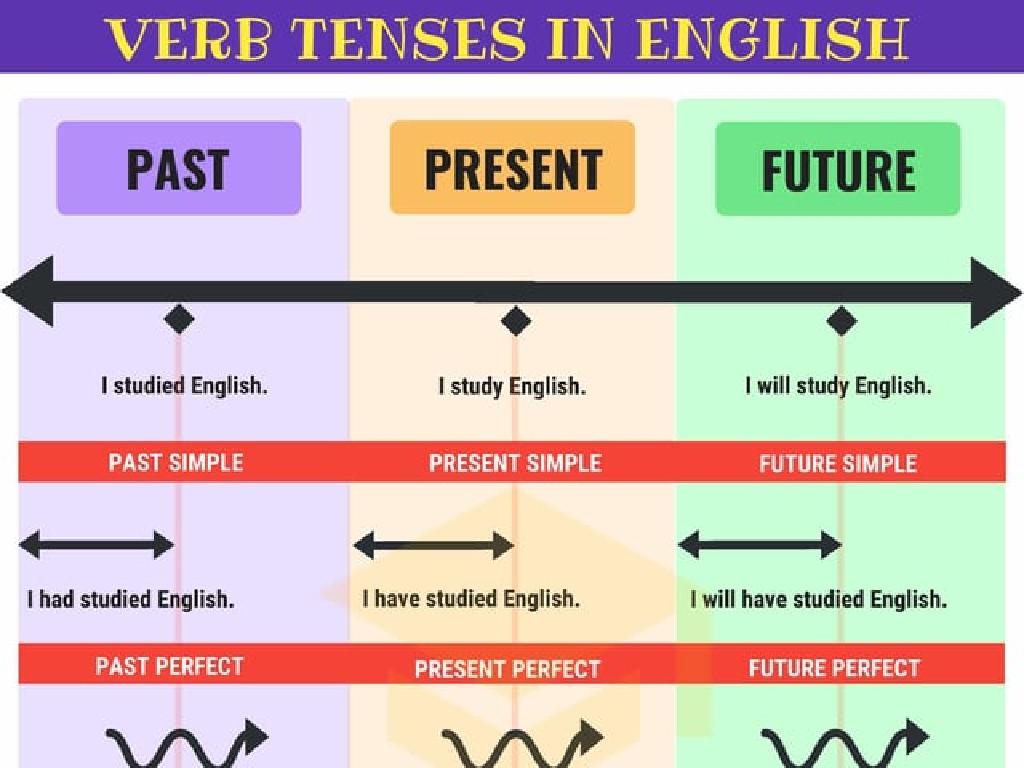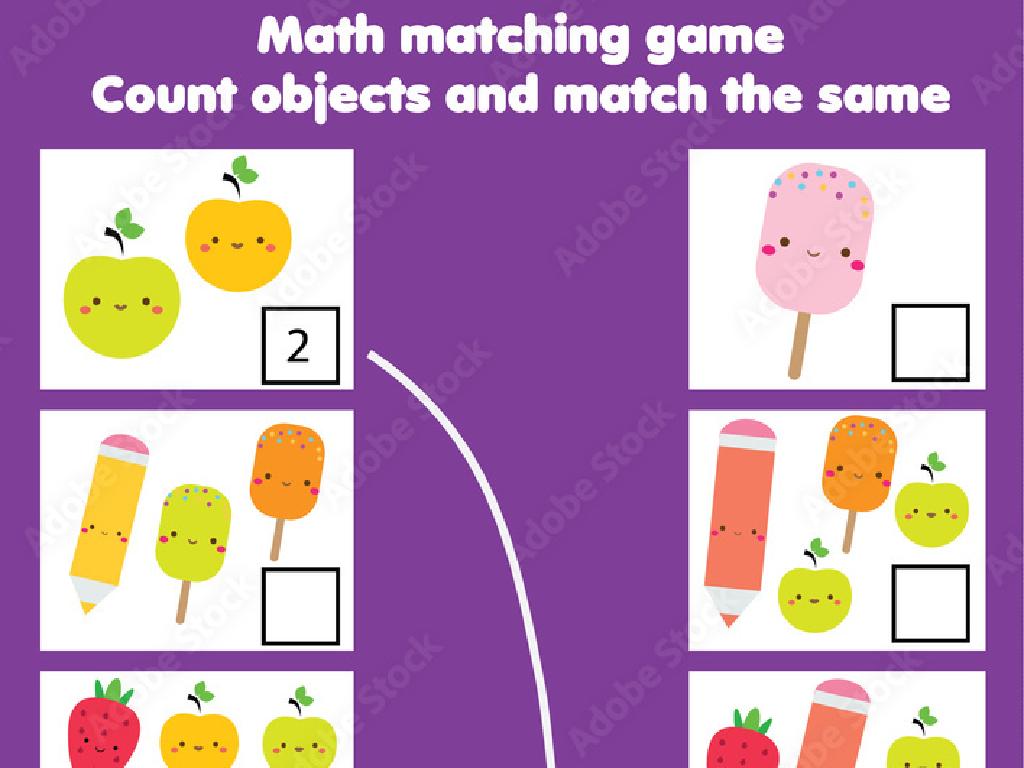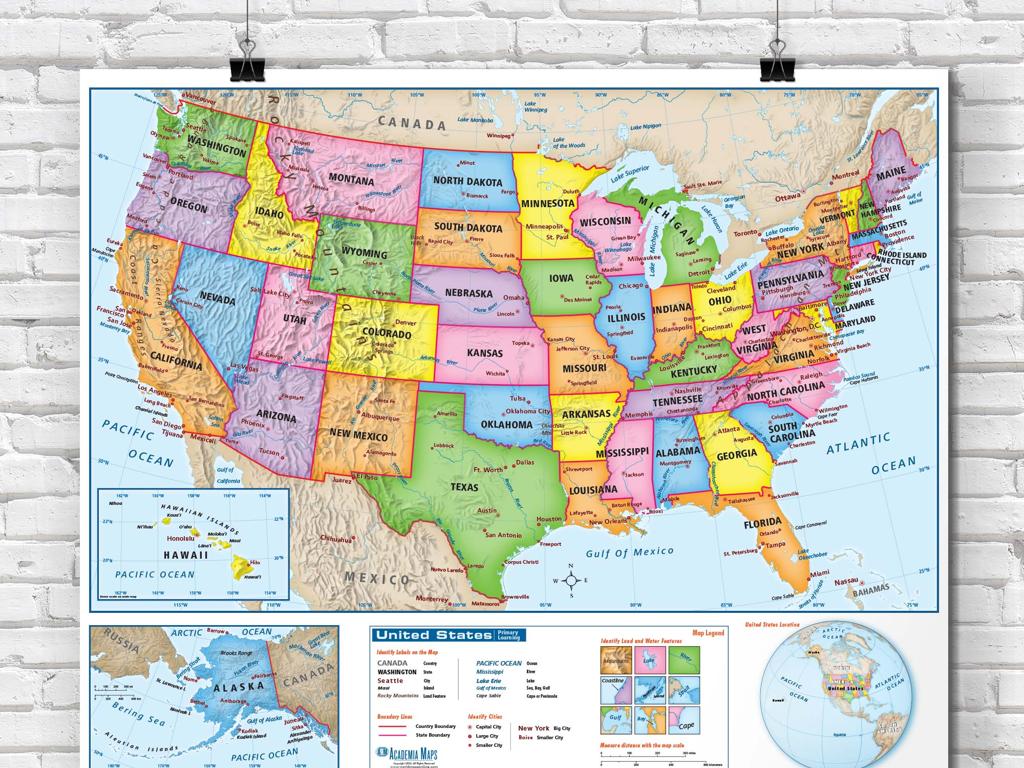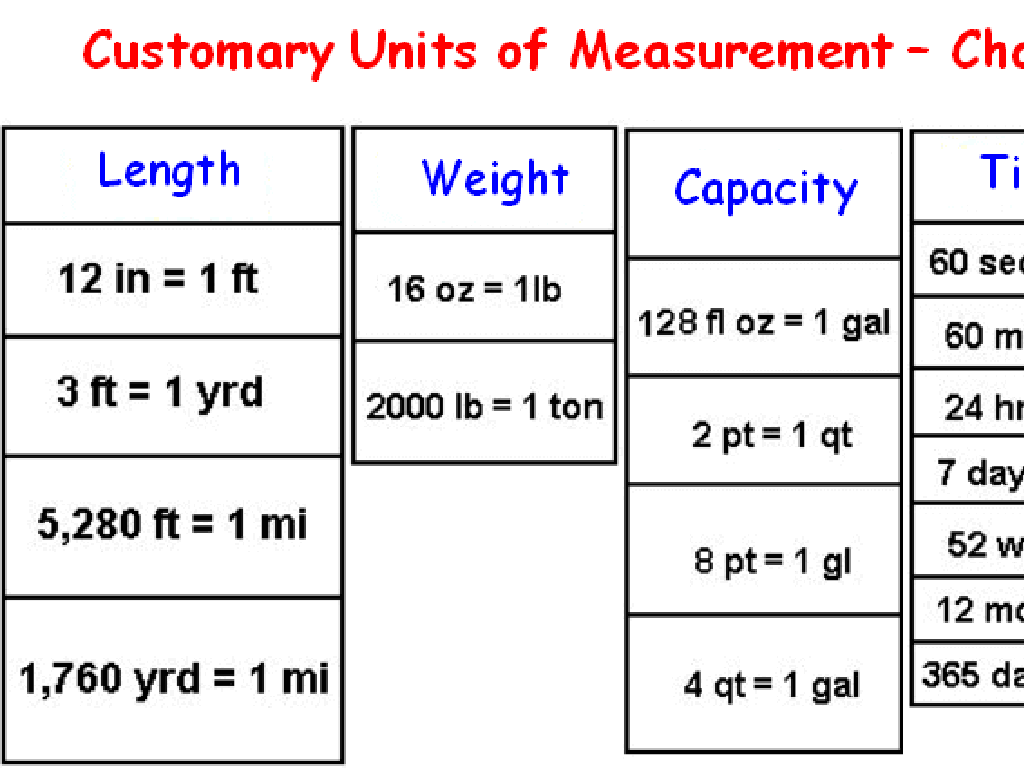Scaling By Fractions And Mixed Numbers
Subject: Math
Grade: Fifth grade
Topic: Scaling By Fractions
Please LOG IN to download the presentation. Access is available to registered users only.
View More Content
Scaling by Fractions and Mixed Numbers
– Understanding scaling concepts
Scaling means to resize objects proportionally.
– Role of fractions in scaling
Fractions help to increase or decrease the size of an object.
– Scaling in real-life scenarios
Examples: recipes, maps, and model building.
– Practice scaling with fractions
Use fractions to scale objects up or down in size.
|
This slide introduces the concept of scaling, an important mathematical skill that involves resizing objects while keeping proportions the same. Emphasize that fractions are a key tool in scaling, allowing us to accurately increase or decrease the size of an object, such as when adjusting a recipe or reading a map. Provide real-life examples to help students connect the concept to everyday life, such as scaling down a recipe or creating a model building. Encourage students to think of other examples where they might need to scale objects. The slide sets the stage for hands-on activities where students will practice scaling objects using fractions and mixed numbers.
Understanding Scaling with Fractions
– What is scaling?
– Making objects larger or smaller proportionally
– Importance of scaling
– Used in maps, models, and designs to represent real objects
– Scaling with fractions
– Multiplying dimensions by a fraction to scale down or up
– Scaling in real-world
– Architects scale down buildings, chefs adjust recipes
|
Scaling is a mathematical concept that involves proportionally increasing or decreasing the dimensions of an object. It’s a critical skill in various fields such as cartography, where mapmakers scale down actual distances to fit on a page, or in architecture, where large structures are represented in smaller, manageable models. Introduce the concept of scaling by fractions, explaining that when we multiply the dimensions of an object by a fraction, we are scaling the object by that fraction. For instance, if we have a recipe that serves 4 and we want to serve 6, we scale the ingredients by multiplying by the fraction 3/2. Encourage students to think of examples where they might need to scale objects in their daily lives.
Understanding Fractions and Scaling
– Review fractions and mixed numbers
– Fractions as parts of a whole
– A fraction like 1/2 means one part out of two equal parts.
– Examples of simple fractions
– 1/4 of a pizza or 3/5 of a mile
– Scaling with fractions
– If a recipe calls for 1/2 cup of sugar, using 1/4 cup scales it down by half.
|
Begin with a quick review of what fractions and mixed numbers are, ensuring that students recall how to read and write them. Emphasize that fractions represent a part of a whole, using tangible examples like slices of pizza or lengths of a race. Provide simple, clear examples of fractions to solidify their understanding. Then, introduce the concept of scaling by using fractions to increase or decrease quantities, such as ingredients in a recipe. This will set the foundation for more complex operations with fractions and mixed numbers in real-world contexts. Encourage students to think of other examples where they might need to scale quantities up or down.
Scaling with Fractions and Mixed Numbers
– Scale objects using fractions
– To shrink or enlarge figures, multiply by a fraction
– Multiply dimensions to scale down
– For a smaller size, multiply each side by a fraction less than 1
– Use fractions to scale up
– To increase size, use a fraction greater than 1
– Effects of scaling up
– Scaling up makes the object larger but keeps the shape
|
This slide introduces the concept of scaling objects with fractions and mixed numbers. When scaling down, we multiply the dimensions of the object by a fraction less than one. Conversely, to scale up, we use a fraction greater than one. It’s crucial to emphasize that scaling changes the size of the object but not its shape. Provide examples such as scaling a rectangle with sides of 4 by 1/2 to get a new rectangle with sides of 2, or scaling up by 3/2 to get sides of 6. Encourage students to visualize the process with real-life examples, like resizing a photo or a drawing. The goal is for students to understand the practical application of fractions in scaling and to be able to perform these operations confidently.
Scaling with Mixed Numbers
– Understanding mixed numbers
– A mixed number has a whole number and a fraction, like 2 1/2
– Scaling using mixed numbers
– Multiply whole numbers and fractions separately, then add results
– Real-world scaling examples
– Recipe adjustments: 1 1/2 times a cookie recipe makes more cookies
– Practice problems
– Solve scaling problems in homework for mastery
|
This slide introduces students to the concept of mixed numbers and their application in scaling. Begin by explaining what mixed numbers are, emphasizing the combination of whole numbers and fractions. Demonstrate how to scale quantities using mixed numbers, ensuring to clarify the process of multiplying whole numbers and fractions separately before combining the results. Provide relatable examples, such as adjusting recipes, to show how scaling with mixed numbers is used in everyday life. Conclude with practice problems to reinforce the concept, allowing students to apply what they’ve learned in a practical context. Encourage students to think of other situations where they might need to scale quantities using mixed numbers.
Scaling with Fractions and Mixed Numbers
– Scaling a recipe with fractions
– If a recipe is for 4 people, how to adjust for 6? Use fractions to scale ingredients.
– Adjusting model sizes using fractions
– To create a smaller version of a car, scale down each dimension with a fraction.
– Understanding the usefulness of scaling
– Scaling helps in everyday life, like cooking or building models, to adjust quantities or sizes.
|
This slide aims to demonstrate the practical applications of scaling by fractions in real-life scenarios. Students will learn how to apply their knowledge of fractions to scale quantities up or down, which is a valuable skill in various situations. For example, when cooking, they might need to adjust a recipe for a different number of people, or in building models, they might need to create a smaller or larger version of an object. Discuss with the students how scaling is a form of multiplication or division and how it can be used to proportionally increase or decrease values. Provide additional examples and encourage students to think of other areas where scaling by fractions is applicable.
Class Activity: Let’s Scale!
– Scale a drawing with fractions
– Use grid paper, pencils, rulers
– Each square can represent a fractional part of the whole
– Work in pairs for teamwork
– Collaborate to solve problems and compare methods
– Share your scaled drawings
– Present your work to the class for discussion
|
In this activity, students will apply their understanding of fractions to scale a drawing. Provide each pair with grid paper, pencils, and rulers. Explain that each square on the grid can represent a whole or a fractional part, depending on the scale factor they choose. Encourage students to discuss their approach with their partner and work together to complete the task. After scaling their drawings, have each pair present their work to the class, explaining the fraction used and how they applied it to scaling. This will foster communication skills and deepen their understanding of the concept. Possible variations of the activity could include scaling up or down using different fractions, or even challenging students to scale using mixed numbers.
Scaling by Fractions: Conclusion & Recap
– Recap: Scaling with fractions
– We learned how to multiply to resize shapes or quantities.
– Importance of scaling skills
– Scaling helps in real-life problems like cooking or building.
– Preview of next lesson
– Encourage practice at home
– Try scaling your favorite recipe or measuring for a craft!
|
This slide aims to consolidate the students’ understanding of scaling by fractions and mixed numbers. Emphasize the practical applications of scaling in everyday life, such as adjusting recipes or creating models. Highlight the importance of these skills in various real-world scenarios to solidify their relevance. Give a sneak peek into the next lesson to pique students’ interest and encourage them to continue practicing these concepts at home, possibly by applying them to activities they enjoy, like cooking with family or working on a hobby that involves measurements.
Scaling by Fractions: Homework Assignment
– Practice scaling with fractions
– Solve problems to understand how to scale objects using fractions
– Create a scaled drawing
– Use what you’ve learned to draw a picture with scaled dimensions
– Get ready for a scaling quiz
– Review your notes and practice problems to prepare for the quiz
|
This slide outlines the homework assignment focusing on scaling by fractions and mixed numbers. Students are expected to complete practice problems to reinforce their understanding of how to scale objects using fractions. Additionally, they are tasked with creating their own scaled drawing, which will help them apply their knowledge in a practical way. Lastly, they should prepare for a quiz on scaling, which will assess their comprehension of the material covered in class. As a teacher, provide clear instructions for the practice problems and criteria for the scaled drawing. Offer resources for quiz preparation, such as a study guide or review session.






